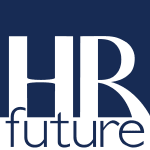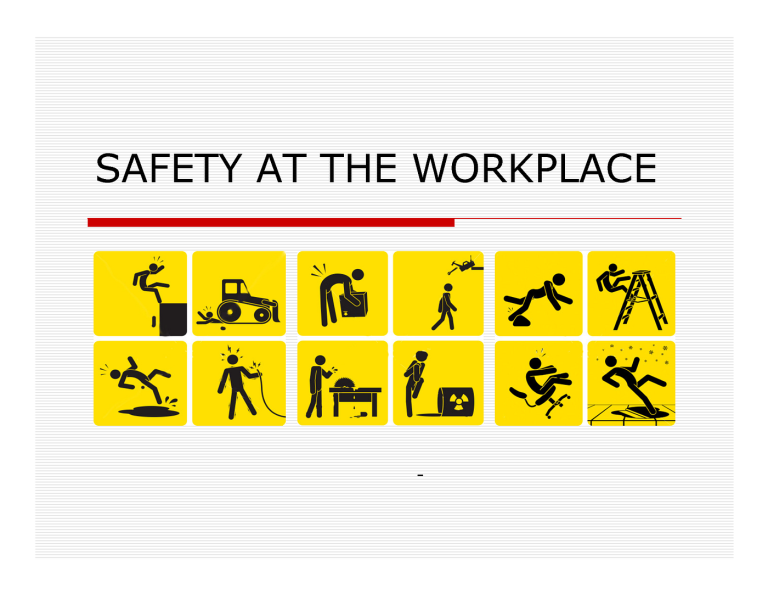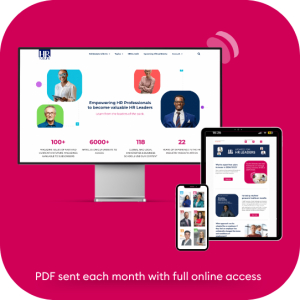In a world where job satisfaction often predicts success, innovative employee benefits have emerged as a game changer. Imagine a workplace where your personal needs and aspirations are valued just as much as your skills. It’s no longer just about a paycheck; companies are now recognizing that happy employees are motivated employees.
What does this mean for the modern workforce? From flexible remote work options to personalized well-being allowances, organizations are rolling out unique offerings designed to nourish both your professional and personal life. This article dives into these creative benefits, showcasing how they can lead not only to happier employees but also to healthier, more thriving workplaces.
Innovative employee benefits for the modern workforce include personalized well-being allowances, flexible remote work options, and sabbatical leaves for personal development. These offerings not only enhance employee satisfaction but also foster a culture of engagement and loyalty within organizations.
Innovative Employee Benefits for Today’s Workforce
Customizable employee benefit packages such as what’s listed here are becoming a cornerstone of modern employee engagement strategies. Companies like Facebook and Google are leading the charge, allowing employees to select from a plethora of options tailored to their unique needs. Imagine having the freedom to choose benefits that resonate with your lifestyle—be it childcare assistance for busy parents, pet insurance for animal lovers, or legal services when you need extra support. The result is not only a more satisfied workforce but also a reinforced sense of belonging, as employees feel recognized and valued.
This shift toward tailored benefits reflects a growing understanding that one size does not fit all in the workplace.
Tech-Enabled Benefits
Leveraging technology is another significant trend in employee benefits. Companies like Slack have adopted platforms that simplify how employees manage their benefits. With just a few clicks, they can access everything from health insurance plans to wellness programs all in one place. This tech-savvy approach minimizes confusion and enhances participation rates, making it easier for employees to access resources that keep them healthy and engaged.
Incorporating technology in employee benefits isn’t just a convenience; it is an investment in employee efficiency.
Furthermore, this shift addresses another crucial aspect: transparency. When employees can clearly see what benefits they have available, they are more likely to utilize them effectively. For example, Health Savings Accounts (HSAs) provide employees with an organized way to save for qualified medical expenses, ultimately leading to better financial well-being. By introducing platforms where employees can visualize their entire benefit package, organizations foster a culture of empowerment and informed decision-making.
These innovative approaches signal a pivotal change in how organizations perceive their responsibilities toward employee welfare.
Support for Diverse Work Environments
Another critical area is recognizing the importance of flexible work environments. With the rise of remote work shaping today’s job landscape, employers must consider enhancements that accommodate various working conditions—be it onsite, hybrid, or fully remote setups.
Employers are responding with initiatives like job sharing and improved ergonomic workspaces which make all the difference in how comfortable and productive employees feel at work. For instance, companies offering stipends for home office equipment help ensure that remote workers have access to comfortable and efficient setups.
As we step into an era where flexibility is paramount, such support measures not only enhance daily work life but also convey a company’s commitment to employee well-being.
While these innovative benefits add value to the workplace, they also contribute to an organization’s competitive advantage in attracting top talent.
Fostering Growth through Upskilling
In addition to customized options and tech-enabled platforms, investing in upskilling and professional development has become paramount for many organizations. Statistics show that a large portion of Gen Z employees express a strong desire for growth opportunities within their roles. By providing comprehensive training programs and mentorship initiatives that position employees for advancement, businesses cultivate loyalty among their teams.
Imagine this: investing time and resources into helping an employee expand their skill set doesn’t just benefit them—it enriches the company as well by fostering innovation and adaptability across teams. Moreover, it’s essential that employees feel supported as they navigate career pathways that align with both personal aspirations and organizational goals.
When businesses prioritize not just retention but also continuous growth for their workforce, everyone wins.
Now let’s explore additional methods companies can employ to support their staff while promoting a healthier work-life integration.
Enhancing Work-Life Balance
A healthy work-life balance is integral not just for employee satisfaction, but it also significantly boosts productivity. As companies seek to create environments that support their employees’ overall well-being, they are increasingly leaning into strategies that prioritize this vital balance. One of the most effective methods is through flexible working hours.
Flexible Working Hours
Imagine waking up in the morning and knowing you have the flexibility to start your day at your own pace. Many companies are now offering flexible working hours that allow employees to choose when they begin and end their workdays. This option is particularly beneficial for parents managing school runs or those who prefer working during their peak hours—be it early birds soaring at dawn or night owls thriving under moonlight. Such flexibility fosters an environment where employees can align their work commitments with personal priorities, enhancing both productivity and happiness.
According to a 2024 survey by FlexJobs, a remarkable 82% of employees reported that having a flexible work schedule significantly enhances their mental health and overall job satisfaction.
However, flexible hours are only part of the equation; another crucial element in achieving work-life balance is the acceptance of remote work opportunities.
Remote Work Opportunities
Allowing employees to work from home or any location of their choice does wonders for reducing commuting stress — think about the time wasted sitting in traffic or squeezing onto crowded public transport! This flexibility contributes to a healthier lifestyle. When employees can set up their workspace in a way that works best for them, studies show their morale and productivity tend to soar.
For organizations considering remote work policies, investing in robust communication tools like Zoom and Slack can facilitate seamless interactions among remote teams, ensuring everyone stays connected regardless of where they log on.
Not only does remote work benefit individual employees, but it has wider implications for the company as a whole. Organizations embracing this model find they can tap into talent beyond geographical limits, attracting diverse skills and perspectives necessary for innovation and growth.
Incorporating these enhanced work-life balance strategies demonstrates a commitment to fostering a culture of well-being within an organization. By prioritizing flexible hours and supporting remote work opportunities, companies can significantly improve employee satisfaction.
As we transition from these innovative strategies addressing employee wellness, it’s essential to recognize how further investment in personal growth and financial incentives plays a crucial role in cultivating a motivated workforce.
Career Growth and Financial Incentives
Providing opportunities for career growth and financial incentives is crucial in keeping talented employees engaged and motivated. When companies prioritize these aspects, they send a clear message: your professional development matters here. Employees who feel supported in their growth are more likely to be loyal and committed. This loyalty translates into lower turnover rates, ultimately benefiting the organization as a whole.
Mentorship Programs
One effective strategy that has gained traction in many organizations is the implementation of mentorship programs. These initiatives pair junior employees with seasoned professionals who can provide guidance, support, and insight into navigating their career paths. For instance, companies like Microsoft have effectively utilized mentorship initiatives, reporting higher job satisfaction among participants alongside reduced turnover rates.
Imagine being a junior employee, eager to learn but unsure where to start; having someone to guide you through the complexities of your field not only builds confidence but creates a supportive community within the workplace.
“Mentoring is not just about sharing knowledge; it’s about inspiring future leaders.”
Implementing such programs requires a clear structure—develop specific goals and timelines to ensure both mentors and mentees find value in the relationship. Regular check-ins can help assess progress and make necessary adjustments, ensuring that both parties remain engaged in the process.
Financial Incentives
In addition to career growth opportunities, financial incentives significantly influence employee satisfaction and retention. By providing diverse monetary benefits tailored to various employee needs, organizations can create an environment where everyone feels valued.
| Incentive Type | Description | Example |
| Performance Bonuses | Extra pay based on performance metrics | Salesforce awards quarterly bonuses |
| Stock Options | Opportunity to buy shares at reduced rates | Early employees of Amazon benefited significantly |
| Tuition Reimbursement | Coverage of educational costs | Starbucks covers full tuition for online degrees from ASU |
A performance bonus structure can incentivize employees to excel in their roles while simultaneously reinforcing their commitment to company goals. When employees see direct financial rewards tied to their performance, it cultivates a culture of achievement without feeling overly competitive.
On the other hand, stock options offer long-term benefits by allowing employees to invest directly into the company’s future success. This can lead to heightened loyalty as employees feel they have a stake in the company’s direction. A renowned example of this was seen with early Amazon employees who were offered stock options—a move that paid off handsomely as the company grew.
Lastly, firms such as Starbucks demonstrate an understanding of both career advancement and financial assistance with their tuition reimbursement program. This initiative not only helps cover educational expenses but also encourages employees to pursue further education aligned with their professional goals.
Focusing on these vital components—mentorship programs and robust financial incentives—plants the seeds for a thriving workforce that takes well-being seriously while laying a strong foundation for comprehensive support systems.
Wellness Programs and Mental Health Support
Investing in employee wellness and mental health is not just beneficial for employees; it significantly contributes to business productivity. In today’s fast-paced environment, organizations must prioritize mental health resources, ranging from access to therapy sessions to initiatives that encourage a healthy work-life balance.
For instance, companies like Buffer have taken proactive steps by offering free therapy sessions through platforms such as BetterHelp. This simple yet powerful resource can reduce stress and help employees feel supported, ultimately improving morale and job satisfaction.
According to a 2023 report by the World Health Organization (WHO), workplaces that actively support mental health see a remarkable 24% increase in productivity. This statistic underlines the need for businesses to move beyond conventional benefits and create an environment where mental health takes center stage.
Mental Health Resources
While some organizations provide straightforward solutions like therapy access, others expand their offerings. Take Bumble, for example; they not only offer counseling options but also facilitate mental health workshops and mindfulness classes. These workshops create space for employees to connect, share experiences, and foster a culture of openness around mental wellness. By incorporating such active approaches, companies can dismantle stigma and encourage constructive conversations about mental health, leading to long-lasting positive change within their cultures.
To maximize the effectiveness of these resources, businesses should implement comprehensive wellness initiatives tailored to meet diverse employee needs.
Comprehensive Wellness Initiatives
Companies can take their commitment further with comprehensive wellness initiatives that include customizable allowances for activities connected to physical and mental well-being. Some organizations provide wellness allowances specifically earmarked for gym memberships or fitness classes, enabling employees to choose what suits them best. For instance, Patagonia subsidizes up to $500 per year for these wellness activities. This flexibility empowers employees to invest in their health based on personal preferences—be it yoga classes, personal coaching sessions, or outdoor adventure excursions.
In a competitive job market where retaining talent is increasingly challenging, companies that offer progressive mental health and wellness programs are more likely to attract and keep talented individuals looking for more than just a paycheck. The emphasis on nurturing a supportive workplace environment speaks volumes about a company’s values and dedication toward fostering employee well-being.
As we move forward in enhancing these well-crafted programs, ongoing engagement strategies will be crucial in reinforcing these vital initiatives effectively.
Flexible Work Arrangements
Flexibility is now a key requirement for modern employees. The traditional 9-5 workday is becoming obsolete, particularly in tech industries where performance and results are prioritized over hours logged. Flexibility allows employees to structure their work lives around their individual needs and rhythms rather than conforming to a rigid schedule. This emphasis on adaptability leads to improved job satisfaction and higher productivity levels.
Four-Day Workweek
Among the innovative arrangements being adopted, the four-day workweek stands out prominently. This model not only gives employees longer weekends but also has been shown to increase productivity and morale significantly. For instance, a New Zealand company called Perpetual Guardian reported a staggering 20% increase in productivity after implementing this policy—truly demonstrating that less can indeed be more when it comes to working hours. Employees are often more energized and focused with shorter workweeks, resulting in substantial gains for businesses.
But the four-day workweek is just one facet of the flexible work landscape; equally important are parental leave policies that help support employee well-being.
Parental Leave Policies
Companies like Netflix are setting a high standard by offering up to one year of paid parental leave, proving that investing in family-friendly policies pays dividends in employee loyalty and happiness. This approach welcomes new parents into the workforce and sends a strong message about the company’s commitment to family values. Providing generous parental leave helps reduce anxiety among employees who might otherwise worry about balancing their careers with their growing families. In many instances, this leads to better focus at work, as employees return rejuvenated and committed.
Creating an environment with flexible work arrangements fosters a healthier workplace culture while demonstrating an organization’s dedication to meeting both professional obligations and personal needs.
As we explore further into flexible working arrangements, it’s vital to recognize that these strategies cater to diverse employee needs—whether through hybrid models or flextime arrangements that align better with our natural energies. By adapting to these changes, organizations not only enhance their competitive edge but also cultivate a workforce that feels valued and understood.
With this focus on flexibility, let’s now turn our attention to the various distinctive perks that enrich the employee experience in today’s modern workforce.
Unique Perks and Lifestyle Benefits
When done right, unique employee perks don’t merely stand out — they transform the workplace into an environment that promotes well-being and productivity. For example, imagine being part of a company that genuinely cares about your lifestyle, understanding there’s more to work than just time spent at a desk.
Offering experiential benefits like Airbnb’s $2,000 annual travel credit for exploration not only provides employees with an opportunity to unwind but also fosters creativity and fresh perspectives upon their return to the office. Such initiatives encourage employees to see their roles within the broader narrative of life. However, these benefits should encompass much more than just trips and outings.
Experiential Benefits
A holistic approach includes all aspects of an employee’s life. For instance, think about benefits that go beyond the borders of travel. Companies are increasingly recognizing that supporting mental health is equally essential.
What if your employer provided biannual wellness retreats? Or perhaps subsidized memberships to mindfulness apps? These offerings shift focus from mere existence to thriving — underlining a long-term commitment to employee well-being.
In fact, stats show that 52% of employers are prioritizing total health through mental health resources. This reflects a growing trend where companies invest in their workers’ overall wellness rather than just traditional healthcare.
This paradigm shift toward a comprehensive focus on well-being often leads companies to explore innovative on-site services that cater specifically to improving daily routines for employees.
On-Site Services
Imagine walking into your workplace greeted not just by your colleagues but also by options for a midday yoga class or a quick massage after staring at screens all day. Companies like Google have taken immense strides in this direction by providing free gourmet meals and on-site laundry services.
These amenities do more than save time; they elevate the quality of life within the workplace, translating into better morale and increased productivity.
Moreover, providing services such as haircuts or massage therapy offers employees convenience over hustle. They don’t need to squeeze in extra errands during lunch hours; instead, they enjoy access to superior experiences right where they work. This creates a sense of community within the organization, where everyone shares in the unique culture crafted around these thoughtful perks.
The integration of these unique perks not only enhances everyday routines but also establishes an enriching atmosphere where personal fulfillment intertwines seamlessly with professional success. As we expand our view further, we’ll explore how these evolving practices are setting the tone for future trends in employee benefits.
Shaping the Future of Employee Benefits
The modern workforce requires employers to remain flexible and adaptive in terms of benefits. Continuous feedback is a necessity. When companies gather insights from employees about which benefits they truly value, they make strategic decisions based on detailed knowledge. Surveys, focus groups, and one-on-one interviews yield invaluable information.
For example, when I worked at a tech firm, the leadership team implemented quarterly check-ins. This allowed us to voice our needs and preferences regarding wellness programs and financial assistance. This simple act created a transparent dialogue and ultimately led to enhancements that resonated with everyone.
Taken as a whole, the response from employees might highlight several key areas of need:
- Work-Life Balance: A growing desire for flexible schedules or remote work options.
- Financial Wellness Programs: Strong interest in tools and resources for managing finances or retirement planning.
- Mental Health Support: Increased interest in counseling services and mental health days.
By actively listening to their teams, companies can fine-tune their offerings to reflect these trends. Adapting employee benefits isn’t merely an act of kindness; it’s a strategic move that boosts morale, enhances retention rates, and positions the company as an employer of choice amidst fierce competition.
Consider how the shift towards remote work has not just created new challenges but also opportunities to provide home office stipends. Employers who recognize these changes early can implement tailored solutions that meet their workers’ unique circumstances.
Emphasizing Personalization
As we look ahead, personalized benefits will become increasingly significant. The days of one-size-fits-all packages are fading away. Flexible benefit structures allow employees to select options that best suit their individual situations—whether that means prioritizing childcare support or receiving gym memberships.
This kind of personalization addresses specific practical needs and gives employees a sense of control over their benefits, leading to greater satisfaction.
Empowering Workers through Enhancements
Moreover, companies should embrace hybrid work support tools that foster collaboration and communication across diverse environments. Investing in technology can streamline workflow processes, enabling employees to connect easily regardless of location. This investment pays off in productivity and conveys a clear message that employee connectivity is valued.
Companies can also expand family-friendly benefits like paid leave and dependent care accounts—steps that lessen family-related stressors for employees juggling professional responsibilities with parenting or caregiving duties. A culture of support creates an environment where productivity thrives, resulting in a healthier workplace overall.
The future of employee benefits hinges on creating innovative solutions that address the complete spectrum of employee needs—be it financial wellness, mental health support, or personal development opportunities.
In embracing these strategies, companies can not only enhance employee satisfaction but also foster loyalty and motivation within their workforce.
Guest writer

























